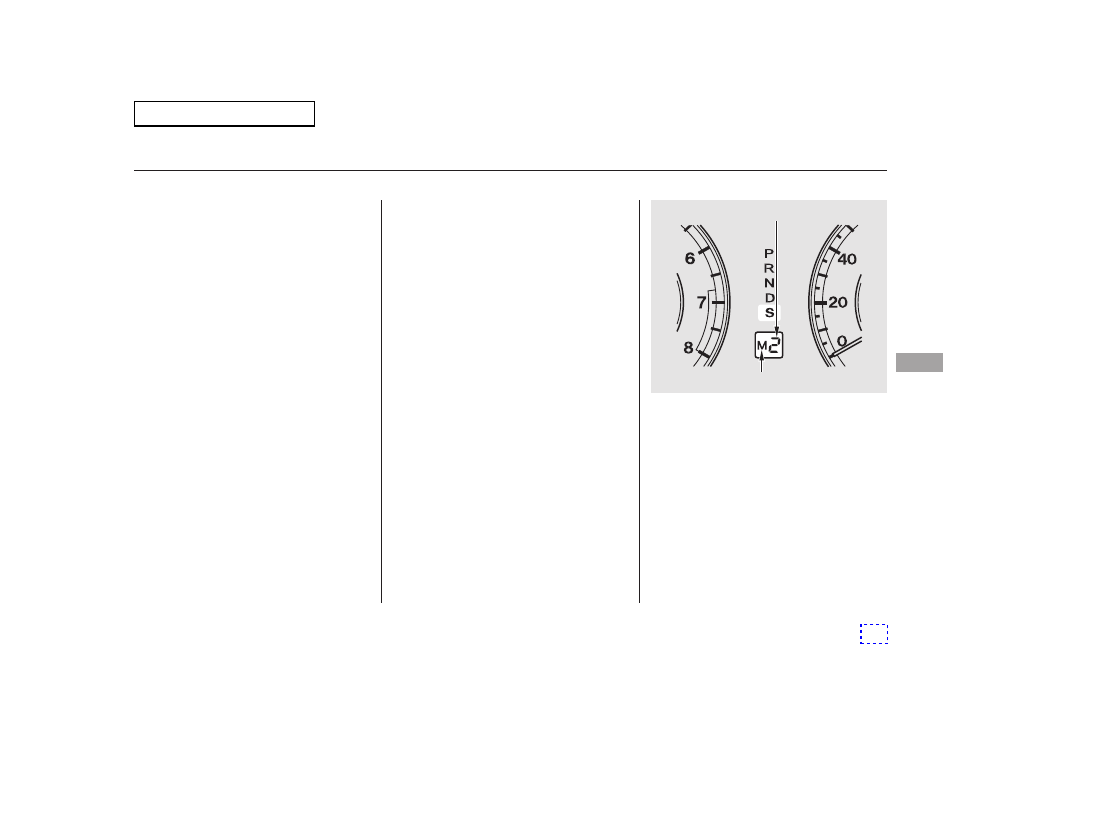Honda Accord Coupe L4 (2011 year). Manual - part 21

+
−
CONTINUED
When you move the shift lever from
‘‘D’’ to ‘‘S’’ position and pull either
paddle shifter, the gear position
indicator displays ‘‘M’’ along with the
selected gear number.
To upshift, pull the
(right) paddle
shifter. To downshift, pull the
(left) paddle shifter.
The transmission downshifts to first
gear and returns to drive mode (D)
when the vehicle comes to a
complete stop or the vehicle speed is
about 6 mph (10 km/h).
If there is a problem in the
transmission while you are driving
with the paddle shifters, the D
indicator flashes, the D-paddle shift
mode is canceled, and the
transmission returns to drive mode
(D).
To enter the sequential shift mode,
press the release button on the front
of the shift lever, move the lever to
the S position, then pull either paddle
shifter. To return to drive mode (D),
move the shift lever to the D position.
While you are driving in the
sequential shift mode, the
transmission will not automatically
return to drive mode (D).
With the shift lever in the S position,
you can manually shift up or down
with the paddle shifters. The
transmission goes into the sequential
shift mode and holds the selected
gear.
V6 models only
Using the Paddle Shifters in the S
position (Sequential Shift Mode)
Driving with the Paddle Shifters (Automatic Transmission Only)
D
riv
ing
GEAR POSITION INDICATOR
‘‘M’’ INDICATOR
Main Menu